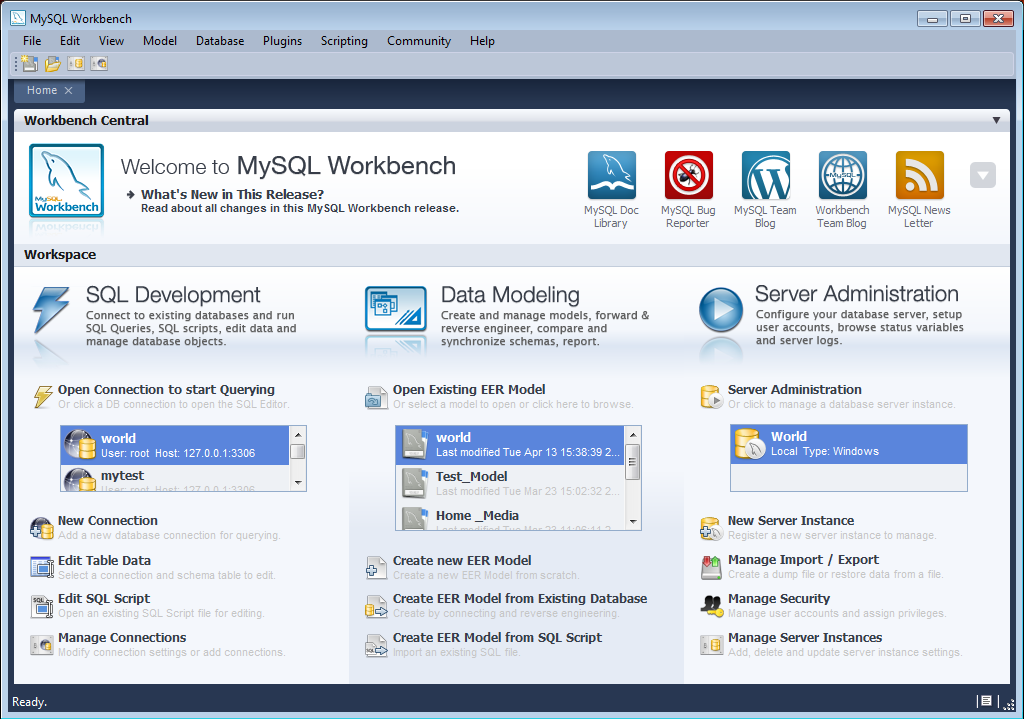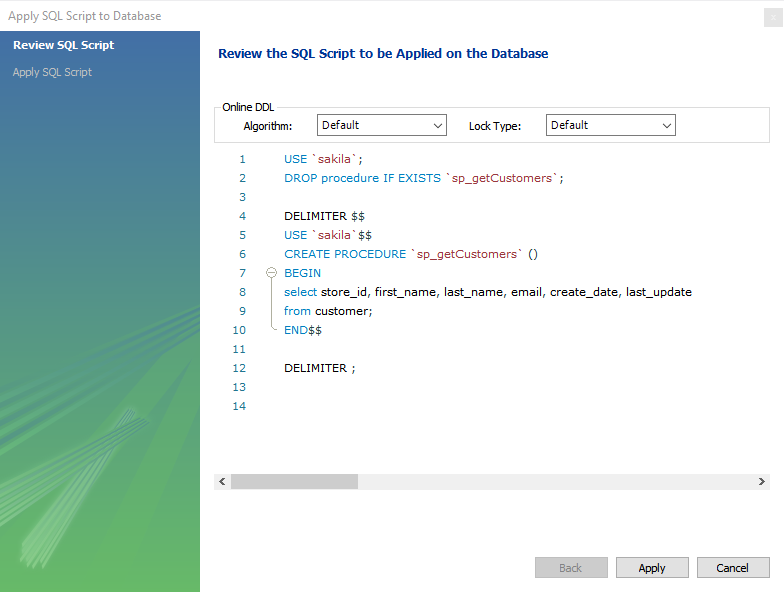

- #Add sql file to mysql database workbench how to#
- #Add sql file to mysql database workbench install#
- #Add sql file to mysql database workbench password#
Name is the table name you want to add, for example, employees. You’ll get a screen that looks like this: MySQL stores its information in a table, which resembles a spreadsheet. Double-click on any item in the schema list to switch to that database. Now you’re back at the main database screen, and you see that phonebook has been added to the schema list. Go to the menu and select Edit, then Preferences.Ĭlick Apply again and you should get a SQL Succesful message. To fix this, we need to turn off safe mode.

This will not allow certain types of queries–such as updates–without explicit IDs. MySQL Workbench is deployed in safe mode by default. The user you just created should be able to log in to MySQL via Workbench or any application that supports accessing a MySQL database. Select a role or assign specific privileges by checking the different boxes. You can add a user and give assign privileges.Ĭlick Users and Privileges under the Management pane.Įnter a Login Name and a Password, then confirm the password. Workbench provides the capability to add, edit and manage user privileges. Just like it’s a bad idea to use the root account for “daily use” in the shell, the same idea applies inside MySQL. Then you’ll arrive at the database screen, from where you’ll do most of your work. Workbench will prompt for passwords again, as needed. You’ll see connection details, then click Connect. If you have more than one Linode or other servers you administer, you can repeat this process to add all of your database servers.Ĭlick on the shortcut to your Linode. You’ll get a shortcut to the new connection on the home screen. If all is well, you should get a Connection Successful message.Ĭlick OK to clear the message, then click OK again to add the connection.
#Add sql file to mysql database workbench password#
Use the appropriate password (SSH or MySQL) or the connection will fail. Pay attention to the Service area of each dialog. It’s OK to leave this blank if you haven’t created a database yet or don’t want one to load by default. If you don’t store it here, then Workbench will prompt for it each time.ĭefault Schema - This is the default database to connect to. Password - This is the database user’s password. If you just installed MySQL, this will be root. Username - This is the database username. MySQL Server Port - Leave this as 3306 unless you changed the MySQL port number. MySQL Hostname - Leave this as 127.0.0.1, which indicates the database is running on your Linode.

SSH Key File - If you use an SSH key pair instead of a password, you can point Workbench to your key file through this setting. If you don’t provide it, then Workbench will prompt for it each time. SSH Password - You can store your password for the SSH connection here if you want to. If you use a non-standard port (other than 22), add it to the end following a colon (example: 203.0.113.0:2222). SSH Hostname - The IP address of your Linode. If you just installed MySQL, then your username will be root and the password will be that which you provided when installing MySQL.Ĭlick the + adjacent to MySQL Connections to get the Setup New Connection dialog:Ĭonnection Name - This is the name of the connection for your reference only.Ĭonnection Method - Set this to Standard TCP/IP over SSH. This is the same username and password you would use to login to phpMyAdmin or other administrative tools. You’ll need your MySQL username and password for this step.

The first step after running MySQL Workbench is to add your Linode as a database server. Once you configure your database servers, as we’ll do next, then they’ll have shortcuts on the home screen. When you start MySQL Workbench, you’ll land at the home screen. The screenshots in this guide were taken in Ubuntu but once Workbench is installed on your system, the subsequent steps should be similar for other platforms. Alternatively, some distributions have MySQL Workbench in their repositories. rpm packages available on the Workbenchĭownload page.
#Add sql file to mysql database workbench install#
MySQL index of our Guides and Tutorials pages.ĭownload and install MySQL workbench from the You can find instructions for this and the recommended prerequisites for your particular Linux distribution in the
#Add sql file to mysql database workbench how to#
This guide will show you how to get started using


 0 kommentar(er)
0 kommentar(er)
